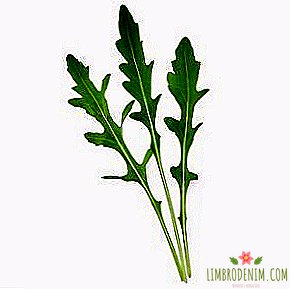What to eat in spring: 10 healthy seasonal products
The days are getting longer and although only the calendar reminds of the onset of spring, the sun is about to start not only shining, but also warming. It's time to wake up from hibernation and replenish stocks of vitamins, energy and joy, spent long winter. We have compiled a list of seasonal products, which in the coming March will help to find vigor and spring mood.

carotene - a natural antioxidant.
Leek is a cold-resistant plant, and young greens appear in early April. The leaves of a leek are tougher than the feathers of green onions, which is why it is usually not eaten raw, but cooked - and this can be done in a million different ways. A soft-tasting onion will decorate an omelet (say, Alsatian, with leek and ham stewed in butter), a variety of soups (including vegetable, chicken or onion), and you can also bake a quiche based on it.

Chard
Another early and cold-resistant plant that easily withstands all the quirks of changeable spring weather. Large leaves of chard, dark green with cherry-red cuttings, are pleasing to the eye and are beneficial: there are a lot of vitamin C, vitamin K required for blood coagulation, and iron, which provides a normal level of hemoglobin in the blood, in leaf beets.
Unlike ordinary beets, chard is an early vegetable, its greens appear in April and persist until severe frosts. Young leaves taste reminiscent of something between spinach and beetroot and are good in salads - for example, with feta and olive oil. Leaf beets can be stewed and served as a side dish or as a separate dish, added to omelets and quiche toppings, used for dressing soup instead of cabbage; of large leaves of chard can make cabbage rolls.

Oranges
Everyone knows about the benefits of citrus since childhood, and do not forget about them in adulthood. Orange is not a fruit, but a whole pharmacy: vitamins A, groups B, C and E, potassium, phosphorus, calcium, magnesium, iron, zinc, and much more. It nourishes the body with nutrients and improves mood, which is especially valuable in the early spring, when there are still few other fresh fruits and vegetables.
Fresh oranges are not necessary to eat just like that - you can make a salad with yogurt and orange juice, use peeled orange slices as an additive to green leafy salads or garnish with morning oatmeal. If desired, you can cook something more serious: fragrant orange cinnamon pie, duck with oranges or traditional English marmalade - liquid jam, where fruits are cooked together with the skin.

You can cook it in many different ways: asparagus is good in green salads with olive oil, in creamy mashed potatoes (with potatoes or on its own), omelets, pasta and casseroles. Asparagus makes an excellent side dish for fish or chicken - you just need to boil it or bake it on the grill. You can serve asparagus and as a separate dish: boil and season with hollandaise sauce (or just butter) or bake, wrapped in thin slices of prosciutto.

Sauerkraut
In contrast to the expensive asparagus - domestic and affordable superfood. The most useful sauerkraut without heat treatment - in the form of a salad with vegetable oil. In this case, we get the maximum contained in the cabbage vitamins B, K and C, and more useful lactic acid bacteria. There is a lot of fiber in cabbage - it is important for intestinal health.
Sauerkraut can be bought or made independently - in this case, you can diversify the recipe by adding apples, cranberries, lingonberries and beets, or, for example, red pepper and garlic. You can salt the cabbage in a Caucasian way, with whole pods of beans and pepper, or in German - without a carrot, but with cinnamon, cloves and juniper.
The resulting product is pleasant to eat in its pure form and is easy to use in cooking: Russians boil cabbage from the cabbage, Poles stuff it with dumplings and stew with porcini mushrooms, and the Germans prepare an excellent warming dish called sauerkraut, where bacon and sausages are stewed along with cabbage in white wine and a big piece of meat.

Arugula and other salads
Sheet salads are not a dozen, and they are all good in their own way - and bitter arugula, and refreshing cress, and fragrant lollo-rosso, and crisp iceberg. They are available and full of vitamins and fiber all year round, but get the best taste in the spring. Most often, lettuce leaves are eaten, in fact, in salads - they can be supplemented with almost anything from fresh berries to tuna. An excellent habit is to replace carbohydrate side dishes with fresh lettuce, and the ability to mix different varieties of leaves and change dressing helps to diversify the diet.
With fresh arugula, parmesan and pine nuts, you can make your own pesto by yourself - you need only a powerful blender. Heading salads are great on the grill; to do this, cut the head lengthwise into two halves and pour it with olive oil - in Italy, they cook red leaf radicchio as a side dish for fish.

it is assimilated, possessing at the same time all the advantages of meat: a large amount of protein, trace elements and vitamins.
The taste of the lamb is softer than that of the lamb, so many cooks prefer to serve it in its pure form - just by grilling steaks on the grill or baking the whole piece of lamb. At the same time, there is a sea of various recipes with lamb, from the most delicious dishes of Georgian cuisine like chakapuli to Asian options, where lamb is prepared with soy sauce and sesame.

Spinach
Another indispensable spring vegetable in European cuisine. Spinach is very early and becomes tasty by the beginning of March, it is good for its ability to adapt to almost any dish, and this is probably one of the most useful products in principle. It is rich in vitamins A, E, C and K, carotene, folic acid, iron and other trace elements.
Young leaves of spinach perfectly turn into a salad, and harder ones can be cooked in a pan, just a little with butter. As soon as they decrease in volume - spinach is ready. It is suitable as a garnish for meat or fish, they can fill the soup, add to the stew, mix with ricotta and turn into homemade ravioli stuffing or just put in a paste.

Germinated seeds
Wheat, rye, barley, beans, or soybeans are foods that can be eaten in the form of germinated seeds, more often called "seedlings." It may seem that this is food for an amateur, but such seeds help to diversify the diet and make it healthier due to vitamins and iron. Unfortunately, ready-germinated seeds are quite expensive and are stored for a short time - but you can recall the lessons of biology and germinate them yourself.
Ready sprouts are added to salads from fresh vegetables, smoothies and oatmeal; Another option is to sprout soybeans and cook Asian dishes with them. Soy sprouts are needed to make the correct udon with chicken, it’s good to add them at the very end of frying in vegetable and meat wash fry or fill them with funchozu or Thai pad thai - soy gives the noodles a pleasant nutty flavor.

similar to lettuce, and therefore use them in a similar way. They look best in a salad - even the most ordinary, with cucumbers and tomatoes. Beijing cabbage is most widely used in Asian cuisine: chopped leaves are added to udon with chicken or shrimp, they are seasoned with Thai curry, noodles and fried rice, and Koreans turn it into kimchi.
Photo:Xavier - stock.adobe.com, Piotr Marcinski - stock.adobe.com, innafoto2017 - stock.adobe.com, ilietus - stock.adobe.com, Studio KIVI - stock.adobe.com, boonchuay1970 - stock.adobe.com, JPC-PROD - stock.adobe.com, Shariff Che'Lah - stock.adobe.com, Le Do - stock.adobe.com, Than Sapyaprapa - stock.adobe.com




